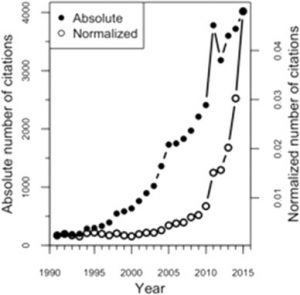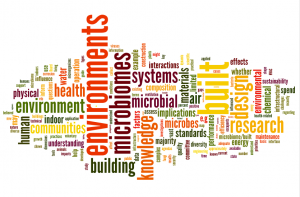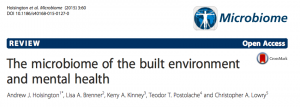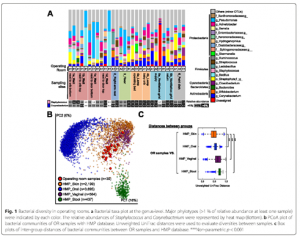Ok so I made this into Clickbait. But you really should read this and that has nothing to do with me being a co-author. The paper is “Ten questions concerning the microbiomes of buildings” and it is in “Building and Environment” a journal that I am becoming more and more appreciative of every month. The …
Microbes in the house Fungal and bacterial growth in floor dust at elevated relative humidity levels — Karen C. Dannemiller — Indoor Air ($6 to rent, $38 to own) Under sustained, elevated building moisture conditions, bacterial and fungal growth occurs. The goal of this study was to characterize microbial growth in floor dust at variable …
There is a report out from the American Academy of Microbiology that is based on the “Microbiology of the Built Environment” colloquium they hosted in September 2015. The report summary is below: Built environments are the structures that humans create to shelter from the outdoors and provide spaces for living, working, playing, and getting places. …
On April 11 there was a meeting in Washington DC that was part of an effort from a new study being conducted by the National Academies of Science, Medicine, and Engineering on “Microbiomes of the Built Environment”. Videos and slides from the meeting have now been posted. I have compiled them below. In addition, I …
There is a wonderfully essay by Tal Abbady coming out in tomorrow’s New York Times (and available online now). A few years in Spain, and my mother’s last days, helped me see the futility of a sterilized life. Source: Less Disinfectant, More Rioja The essay is about many things, including differences between cultures (pun intended …
Source: The microbiome of the built environment and mental health | Microbiome | Full Text Andrew J. Hoisington, Lisa A. Brenner, Kerry A. Kinney, Teodor T. Postolache and Christopher A. Lowry When I saw the title of this I cringed a bit, worried that this paper would be overselling what we know about the microbiome and …
Infants born via c-section have a microbiome community composed mostly of skin bacteria [1-3], but the source of these skin bacteria is unknown. People quickly shed bacteria into their environment, leaving their own bacterial signature in a room within hours [4]. Do hospital operating rooms harbor skin bacteria that could colonize c-section delivered infants? A …
Here are the new papers on microbes in the Built Environment I found this week, about salt-loving bacteria colonizing old houses, viruses in swimming pools, sewer systems, urban water and soils, and microbiota in urban mosquitos. Here is a good ol’ country song to match this post: This Old House by Stuart Hamblen. Paid Access, review: Halophilic microbial communities in deteriorated buildings – …
Illustration (from OpenScar.com) an explanation of the beginning of the spread of SARS in Hong Kong’s Amoy Gardens apartment complex where the index case was in a building 60 meters away from a building where about 45% of the 300 infected individuals at Amoy Gardens lived. Many of the other infected individuals also lived in …
It sounds so nice and catchy. Priobiotics for buildings. We have written about it here are few times Probiotics for buildings in action? Interesting but can’t verify Probiotics for buildings: A potential future application of current work on microbes in buildings Though I have not found any published science behind this movement there is more …





